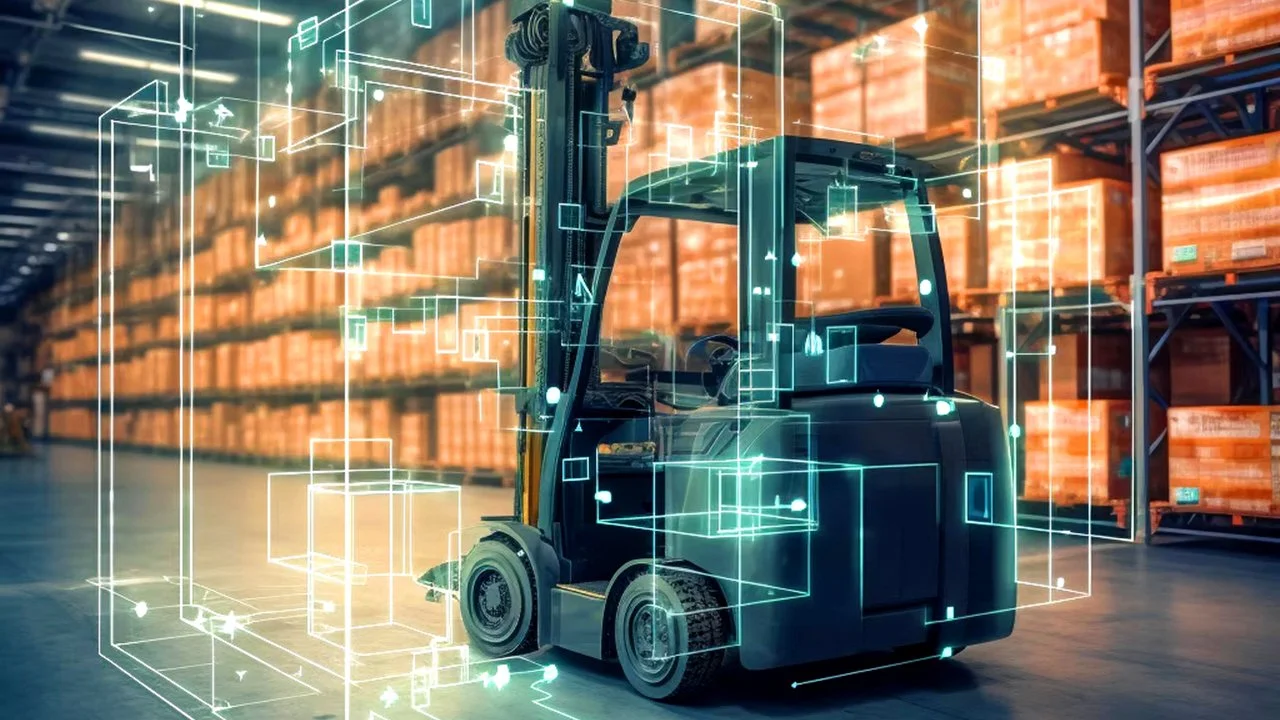22 Forklift Pedestrian Safety Sensors 2025 Guide
Complete EHS Manager Guide
Forklift accidents are among the most serious hazards in the warehouse. New sensor technologies now offer real-time awareness, collision prevention, and support for compliance. This guide summarizes 22 proven forklift detection sensors that protect pedestrians and operators in 2025.
Vehicle-Mounted Perception Systems
Sensors mounted on forklifts provide direct visibility and collision alerts.
1. Monocular (2D) AI Cameras
Entry-level AI vision systems that detect pedestrians and PPE in good lighting. Best for: Standard warehouses and loading docks.
2. Stereo (3D) Cameras
Dual-lens vision adds depth perception for precise spatial awareness. Best for: Narrow aisles and precision maneuvering.
3. 360° Camera Arrays
Combine multiple cameras to eliminate blind spots. Best for: Busy, multi-directional traffic areas.
4. Time-of-Flight (ToF) Cameras
Emit light pulses for 3D mapping and obstacle detection. Best for: Confined, close-range spaces.
5. Structured-Light Cameras
Project light patterns for accurate 3D surface mapping. Best for: Controlled indoor or high-precision environments.
6. Thermal Cameras
Detect heat signatures in darkness, fog, and dust. Best for: Outdoor yards, cold storage, or night operations.
LiDAR & Radar Systems
These laser and radio-based systems provide robust, weather-tolerant coverage.
7. 2D LiDAR
Scans a single plane for obstacles and pedestrians. Best for: Aisle and intersection safety.
8. 3D LiDAR
Creates full 3D maps for advanced detection and tracking. Best for: Multi-level or outdoor operations.
9. mmWave Radar
Operates reliably through dust, fog, and rain. Best for: Harsh outdoor or long-range detection.
Short-Range Proximity Detection
Compact, affordable sensors that alert operators in specific forklift zones.
10. Ultrasonic Sensors
Use sound waves to detect nearby objects. Best for: Rear and side detection.
11. Infrared Sensors
Emit light for short-range object detection. Best for: Fork and mast safety zones.
12. Photoelectric Beam Sensors
Trigger alerts when beams are interrupted. Best for: Mast area and lift zone protection.
Wearable Proximity Systems
Protect pedestrians through tags, beacons, or badges that communicate with forklifts.
13. Ultra-Wideband (UWB) Tags
High-precision tracking with 10–30 cm accuracy. Best for: High-traffic areas and precision manufacturing.
14. Active RFID Tags
Zone-based detection for mid-range alerts. Best for: Medium-traffic warehouses.
15. Bluetooth (BLE) Tags
Budget-friendly, easy to integrate with existing networks. Best for: General indoor safety upgrades.
16. Passive RFID Badges
Battery-free detection for zone entry control. Best for: Access points and low-maintenance operations.
Infrastructure-Mounted Systems
Fixed installations for site-wide pedestrian protection.
17. AI-Powered CCTV Analytics
Detects people and intrusions using existing camera networks. Best for: Facility-wide monitoring.
18. Fixed LiDAR Scanners
Monitor intersections and high-risk zones. Best for: Doorways and chokepoints.
19. Light Curtain Safety Systems
Infrared barriers trigger instant alerts when crossed. Best for: Loading docks and restricted zones.
Control, Alerts & Automation
Connect sensors to vehicle systems and visual warnings.
20. Safety PLCs & Relays
Integrate data from multiple sensors for automatic safety responses.
21. Visual & Audible Alerts
Use lights, alarms, or message boards to warn operators and pedestrians.
22. Automated Speed & Brake Controls
Slow or stop forklifts when pedestrians enter detection zones.
Choosing the Right Mix
The most effective approach combines multiple technologies based on:
Environment: lighting, dust, and weather exposure
Traffic Patterns: pedestrian density and direction
Integration: telematics, CCTV, or fleet systems
Maintenance: calibration and sensor upkeep
Budget & ROI: balance cost with long-term risk reduction
Conclusion: Safer Operations with Advanced Detection
Modern safety programs depend on connected technologies—AI vision, LiDAR, radar, and wearable proximity systems—that work together to detect risks before they become incidents. These systems don’t just protect workers; they improve efficiency, reduce downtime, and demonstrate a measurable return on safety investment.
Riodatos helps EHS managers design, implement, and support the right combination of forklift pedestrian safety solutions for their operations. From initial assessment to full deployment, our U.S.-based team ensures every system performs reliably in real-world conditions.
Ready to modernize your facility’s safety strategy?
Contact Riodatos today for expert recommendations, implementation guidance, and full U.S. support.
Summary
🚧 22 Forklift Pedestrian Safety Sensors 2025 Guide 🚧
Forklift-pedestrian collisions remain one of the most preventable causes of workplace injuries.
From 🧠 AI cameras and 🔦 LiDAR to 📡 radar and 🎯 UWB wearables, new technologies are reshaping how EHS managers protect workers in 2025.
This complete guide breaks down 22 sensor types — what they do, where they fit best, and how to build a scalable safety system that evolves with your operations.
🔗 Read the full article: https://riodatos.com/blog/22-forklift-pedestrian-safety-sensors-2025-guide
#ForkliftSafety #PedestrianSafety #AIPedestrianDetection #EHS #WarehouseSafety #LiDAR #Radar #RFID #UWB #WorkplaceSafety #Riodatos



